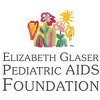 What do today’s college students in the U.S. think about HIV? What do they know about the global epidemic? What do they know about HIV in their own country? What do they know about global efforts toward eliminating pediatric AIDS and getting to zero new infections? These were questions I asked myself while preparing for a set of speaking engagements on the campus of Pacific University in Forest Grove, Oregon.
What do today’s college students in the U.S. think about HIV? What do they know about the global epidemic? What do they know about HIV in their own country? What do they know about global efforts toward eliminating pediatric AIDS and getting to zero new infections? These were questions I asked myself while preparing for a set of speaking engagements on the campus of Pacific University in Forest Grove, Oregon.
Working day in and day out in the field of international public health, I take for granted what I know about the continuously evolving and expanding issues surrounding HIV/AIDS. But when I stopped to consider what an average college student might know about HIV, I was a little uncertain as to what their general awareness, attitude, and understanding might be. I asked Dr. Martha Rampton, Director of the Center for Gender Equity at Pacific University, how to focus my comments for the audience. She explained that many students who are now in university didn’t grow up during a time when AIDS was headline news and there was a higher level of fear and stigma associated with HIV. Today’s young adults know about HIV, but that sense of anxiety and urgency (find a cure or vaccine!) has been replaced with a more blasé attitude toward this epidemic. Treatment exists. Mother-to-child transmission is almost unheard of in the developed world. And news outlets no longer find “fresh” stories that will interest US readers about the 34 million people living with HIV around the world. Simply put, it’s hard to engage students with the topic of AIDS.
Still, at the invitation of the Center for Gender Equity, and through the support of the Office of International Programs and the Elise Elliott Foundation, I traveled to Pacific University in mid-November to participate in a series of events leading up to World AIDS Day. My first encounter with students was in a 100-level public health course, where I told the story of how the Elizabeth Glaser Pediatric AIDS Foundation came to be and my own career path that led me to work at the Foundation. During the discussion, I realized that many students thought of HIV as a problem of the developing world, not directly relevant to their future careers in domestic health. We talked about the characteristics of the epidemic in the U.S., and how many urban areas have a higher HIV prevalence than some African countries.
Later that day, I led a discussion at the health professions campus in Hillsboro, focusing more on the exciting research and innovations of the past decade which have changed the trajectory of the epidemic. We talked about how the U.S. health system has applied many of these innovations, as well as how they are being utilized in developing countries. These students were largely unaware of the advances in bio-medical prevention and asked tough questions about equity and access. They seemed surprised that ending pediatric AIDS around the world is indeed feasible, and it made me glad to be able to share messages of hope that haven’t always made the headlines.
The following day, I gave a presentation for students, faculty, and community members, entitled “HIV’s Mid-Life Crisis: A Story of Hope” which reflected on how different our approach to the epidemic is today compared with 30 years ago, but also looking forward to the next phase which has the potential to see us overcome the epidemic. Based on input from my conversations with students, I made sure to talk about why this is a story of hope and not another gloom-and-doom ethnography of someone in far away Africa. I wanted the audience to find a reason to care about HIV, a reason to be hopeful, a reason to be motivated to push our commitments to reaching zero ahead. During questions, we came back to the underlying issue of rights. Human rights. Access to care and treatment. Access to knowledge and information. What does it say about us as a society to have the tools, skills, and knowledge to achieve a generation free of HIV, yet to allow an epidemic to rage across the globe?
If hope means “feeling what is wanted can be had”, I can’t think of a better scenario to inspire hope among today’s young adults than the potential for getting to zero new infections, zero AIDS-related deaths, and zero stigma and discrimination in the coming years. Science, research, and experience have made the tools available. Hope provides the impulse for each person to pick up and use those tools in their own sphere of influence. I was grateful for the opportunity my visit to Pacific University afforded me to maybe plant some seeds of hope in a few minds.
Originally published at pedaids.org.






1 Comment
1 Comment